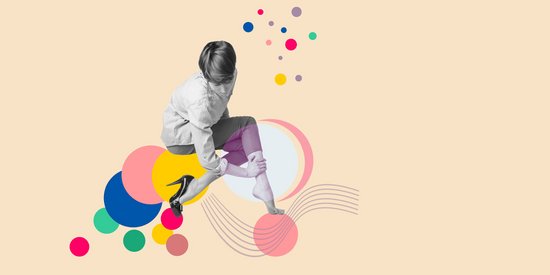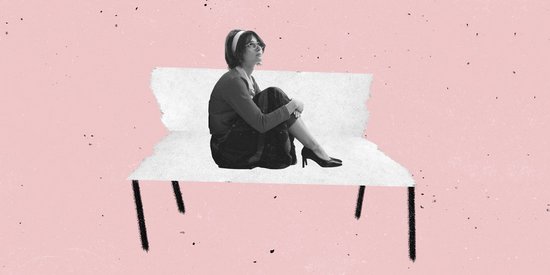Many people are reluctant to undertake a therapeutic approach or have been disappointed by a previous method of psychotherapy. Many did not feel sufficiently guided by their therapist. It was not necessarily the method that was in question, not even the therapist. But an intellectual understanding of a problem is not always enough to solve it. Although studies show the equivalent effectiveness of different therapeutic methods, some people find themselves faced with a limit: if the intellectual understanding of their problem is essential to their healing, it is not always sufficient to help them to get out of their patterns of repetition. .
A solution: expressed emotional dynamics expressed
What is this ?
Expressed Emotional Dynamics (EED) is a therapeutic method centered around the expression of emotions. It was developed by Doctor Etienne Jalenques, a psychiatrist who practiced at the renowned Saint Anne Hospital in France. Unlike the case of most other therapeutic approaches, the therapist actively participates in the journey of his patient, constantly interacting with him: he guides him step by step in what he expresses.
Emotion, a pathway to our unresolved issues
Human beings have an extraordinary ability to avoid painful situations. Hoping to escape suffering, a person puts a whole series of defence mechanisms into place and this begins from his ( or her) early childhood: repression, rationalization, denial... He hopes to solve his problems thanks to his undeniable intellectual faculties and to keep control over the various events of his life. So why does he stay in the same repeating patterns over and over again? Why doesn't his suffering reduce, despite his best efforts? It's very simple: because happiness is not a question of intelligence! An emotional approach makes it possible to integrate what the intellect has understood for a long time.
The function of emotions
Although some of our emotions are unpleasant, they are nevertheless all useful: fear alerts us to the presence of danger; anger of a feeling of injustice, of a lack of respect… Due to our upbringing, most of us have learned to shut up, even to deny our emotions. But doesn't denying one's feelings amount to denying oneself? Fighting our emotions consumes a lot of energy.
What happens when an emotion is not expressed?
Let's take an example: Your boss took it out on you because you didn't turn in your work on time. How could you have done it, with the 5 priority files he entrusted to you the day before? They should have been treated by a colleague, who is unfortunately (still) on sick leave. The colleague who is supposed to help you, arrives late and spends her time on the phone. You dare not say anything to her and are chomping at the bit not to create conflict. In the evening, you return home, tired. You blame your husband and your children over trifling matters. They are however, in no way responsible for the bad day you had. In addition, you feel guilt for taking it out on them. Like a pressure cooker, you have built up so much anger inside you that you let it explode at the wrong time, against the wrong people.
This is how unexpressed anger risks turning into hetero-aggressiveness. All the anger accumulated since your earliest childhood is also likely to turn against you by turning into sadness, or even depression.
Recognizing this anger in oneself, learning to express it in an appropriate way, with respect for the other person is what will allow its release and then its regulation. Remember that anger is not inherently unhealthy. It is the violence that is.
The inhibition of emotions is at the root of many psychosomatic illnesses, of suffering and of multiple blockages in our lives.
Let’s take an example to understand how these phenomena arise: a child is the victim of abuse by an adult in his close circle. The latter convinces him not to tell anyone: "it will be their secret". He can even threaten him of what would happen if he were to break the silence. The child feels that what he is going through is not normal, he isolates himself in his room to cry, afraid of finding himself alone with his executioner. But, loyal to this advisor, with whom he has a complete confidence, he keeps the secret. Emotionally it's a real upset, but he can't share it with anyone. He does not have the ability to process what he is going through, thinks he deserves what is happening to him. Having no other point of reference, he thinks what he is experiencing is “normal”. The violence suffered is such that to protect himself, he ends up cutting himself off from his emotions. He can even totally repress the traumatic event.
As an adult, he suffers abuse from his colleagues and hierarchical superiors but does not dare to denounce the situation: as a child, he internalized that he had no right to break his silence, at the risk of making the situation worse. This kind of situation always makes him just as uncomfortable: he feels a deep sense of injustice; guilt, too, for not knowing how to defend himself against all these abuses. Only here, he does not feel enough inner security within himself to defend himself: resigned, he keeps the belief that he must keep silent about the abuses of which he is the victim. This is how an event from the past is transformed into a limiting belief: if as a child, he had no other choice but to be silent, the adult today has the resources to deal with this type of events. Intellectually, he has analyzed what was being replayed, yet he remains unable to find an answer adapted to the situation: he remains stuck in his childhood fear. It is this emotion blocked at the time of the trauma that is at the origin of his adult problem.
How is EED the solution?
Accompanying the patient from what he feels today in this situation, can allow him to gradually go back to the original trauma: the principle of the EED is to revisit the traumatic events of the past and to release the blocked emotion, because it has not been expressed. The patient can thus transform the trauma into a biographical memory, cleansed of its emotional charge.
The EED will thus allow today's adult to get out of their limiting beliefs and old patterns of repetition. If the strategy he chose as a child has proven effective in the past, it may be counterproductive in the present. EED thus makes it possible to revisit one's beliefs in order to find operating methods that are more relevant today.
Thanks to this work, there is a real harmonization between emotional experience and intellectual understanding.
EED a method for:
Becoming aware of your limiting beliefs and to change them
Widening your field of vision
Expressing, releasing, regulating and putting your emotions at your service
Making sense of painful experiences
Harmonizing the emotional and intellectual spheres
Becoming the artist of your life again
Cultivating individuality, authenticity and a sense of inner security
Who is this for?
For all adults and adolescents with capacities for verbalization and elaboration, suffering from blockages in their lives, hypersensitivity or hyper control, emotional overflow or, on the contrary, inhibition.
Isabelle MARZIO
Expressed Emotional Dynamics Therapist









